Amman, Jordan: A journey between the 10 most beautiful tourist attractions
Amman, the Jordanian capital, is considered the gateway to Arab history and culture. Combining tradition and modernity, this city is home to many tourist attractions that attract visitors from all over the world. In this article, we'll take you on a tour to explore the highlights of these landmarks and dive deep into its rich history.
Show key points
- Amman, the capital of Jordan, seamlessly blends ancient heritage with modern vibrancy, making it a central hub for Arab history and culture.
- The Amman Citadel, perched atop an 800-meter-high hill, showcases ruins from the Roman, Byzantine, and Islamic eras, highlighting the city's historical depth.
- The Roman Amphitheater, a stunning example of Roman architecture, continues to serve as a cultural venue and houses two museums celebrating local heritage.
- ADVERTISEMENT
- Downtown Amman, bustling with markets and traditional eateries, offers visitors a lively atmosphere filled with authentic culture and cuisine.
- King Abdullah I Mosque, with its iconic blue dome, symbolizes religious unity and welcomes visitors of all faiths to learn about Islamic culture.
- Rainbow Street is a vibrant cultural hotspot featuring colorful murals, art galleries, and cafes, where locals and tourists mingle over music and food.
- Sites like the Temple of Hercules, the Cave of the Seven Sleepers, and Qasr Kharana reflect Amman's rich tapestry of myths, faiths, and civilizations.
The Citadel: a witness to history
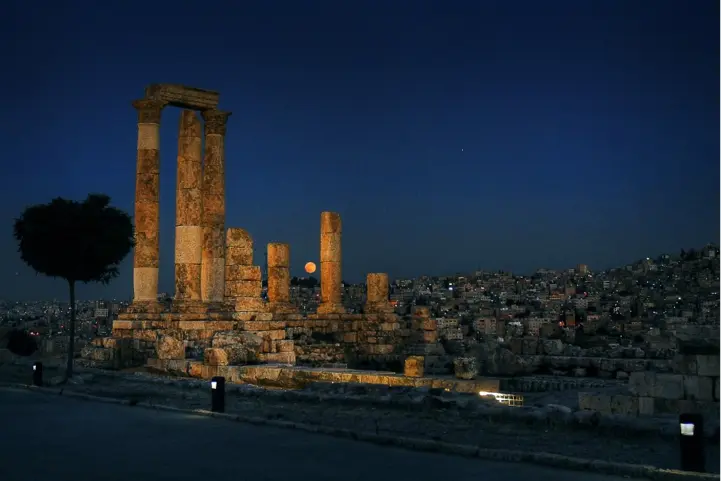
Amman Citadel Jordan is one of the most important historical landmarks in the city, as it stands on a hill overlooking Amman, forming a bridge between the past and the present. The castle is home to monuments dating back to the Roman, Byzantine and Islamic eras, and reflects the diversity of civilizations that passed through it. Visitors can wander through its ruins and feel the spirit of history that spills through its walls.
Recommend
The Citadel Mountain stands tall at a height of approximately 800 meters above sea level, distinguished by its strategic location, which includes a high wall and watchtowers up to about ten meters.
The surviving ruins on the castle mountain are centered in a triangular angle-like formation, where there is a tower and a Corinthian structure, whose foundations and some cut columns have survived. New archaeological discoveries indicate that these monuments belong to the Middle Bronze, Iron, Hellenistic, Roman, and Umayyad Ages.
Moreover, the castle mountain houses the ruins of a sixth-century Byzantine church.
The Citadel Mountain is also famous for its Umayyad palace and rock-cut pond, two of which date back to the Umayyad period. A visit to Jabal al-Qalaa is an opportunity to learn about the richness and cultural diversity of Jordan.
Roman staircase: splendor of ancient architecture
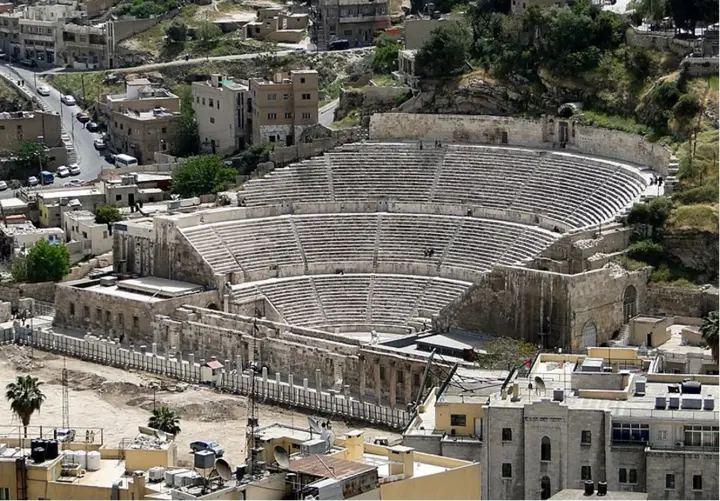
The Roman Amphitheater in Amman is a vivid example of great Roman architecture. Located in the heart of the city with a capacity of 6,000 spectators, it has been used through the ages for cultural events and plays. Today, the amphitheater is a centre of arts and culture, and continues to host numerous cultural events and festivals.
The ancient Roman theater in Amman, which sits on the slopes of Jabal Al-Joufa, is a witness to the greatness of Roman civilization. A Greek inscription on one of the columns shows that the amphitheater was erected in honor of Emperor Antony Pius during his visit to Oman in 130 AD.
The amphitheater adjoins the famous Forum Square, and their area extends together to reach 7,600 square meters, and it is believed that their construction dates back to the second century AD, between 138 AD and 161 AD, during the reign of Emperor Antonius Pius.
The amphitheater has been the scene of many theatrical and musical events, and is known for the excellent sound quality it provides, making it an ideal location to host artistic performances to this day.
Today, the theatre houses two small museums, one is the Museum of Folk Life, which displays the history of the daily life of Jordanians, and the other is the Museum of Folk Costumes, which displays Jordanian and Palestinian traditional costumes, ornaments and women's decorative tools.
Downtown: The beating heart of Amman

Downtown is the nucleus from which Amman originated, and it is full of life and activity. Markets and shops line its streets, and the smell of delicious food from restaurants is scented. Visitors can buy antiques and souvenirs, sample authentic Jordanian dishes, and enjoy the rich cultural scene.
King Abdullah Mosque: A symbol of unity and tolerance

The King Abdullah I Mosque, with its famous blue dome, is one of the most prominent religious landmarks in Amman. The mosque is a place of worship and contemplation, reflecting the religious tolerance for which the city is famous. The mosque welcomes visitors from different religions, providing an opportunity to learn about Islamic culture and architecture.
Rainbow Street: A Mix of Cultures and Arts

Renbow Street, known for its bright colours and graffiti walls, is the heart of cultural life in Amman. Stretching across Jabal Amman, this street features a variety of cafes, art galleries, and shops that reflect the city's cultural diversity. Rainbow Street is a meeting place for locals and visitors alike, where they can enjoy live music, cultural events, and tasting local and international dishes.
Temple of Hercules: Imprint of the Roman Empire
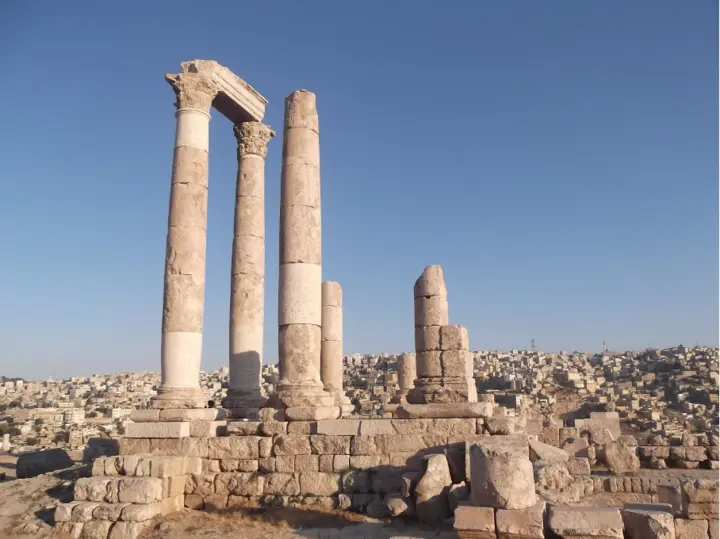
The Temple of Hercules stands tall on the hill of the citadel, a scene that tells the stories of bygone ages. This temple was built in the second century AD and is believed to have been dedicated to the most powerful Roman god, Hercules. The huge columns that still stand give an idea of how grand and magnificent the temple was at its peak. The temple is a great example of Roman architecture and offers stunning views of the city.
This great edifice was built in honor of Emperor Marcus Aurelius between 161 and 166 AD, according to historical inscriptions discovered at the site. Today, visitors can see the surviving façade of the temple, which consists of six majestic columns, as well as a number of other columns that were part of the adjacent royal chambers. The temple, named after the god Hercules, was considered a symbol of strength and protection for the ancient city.
Today, only a few majestic columns remain of this monument. The Ministry of Tourism and Antiquities, in cooperation with the American Center for Oriental Research, made great efforts in the nineties of the last century to restore the temple and preserve it as we see it today.
Cave of the Sleeping Seven: A Myth Embodied in Reality
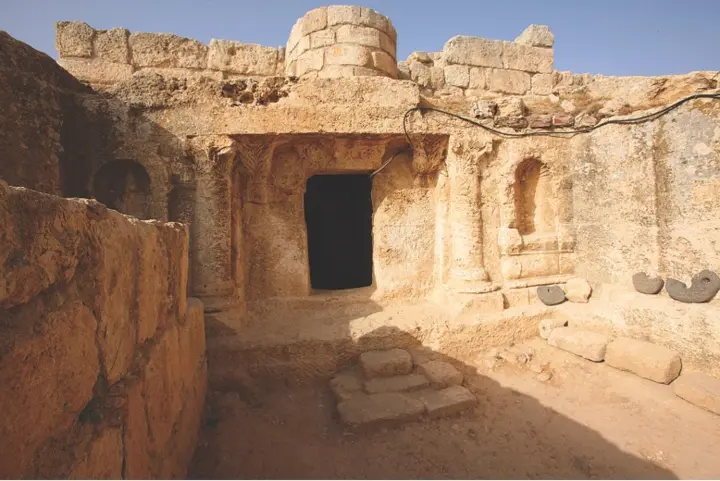
The Cave of the Sleeping Seven, also known as the Cave of the People of the Cave, houses a historical story that blends with legend. It is said that seven young Christians took refuge in this cave to escape persecution, and they slept for centuries, only to wake up in a different world. The cave attracts visitors not only because of its wondrous story, but also because of the tranquility and tranquility it provides.
Kharana Palace
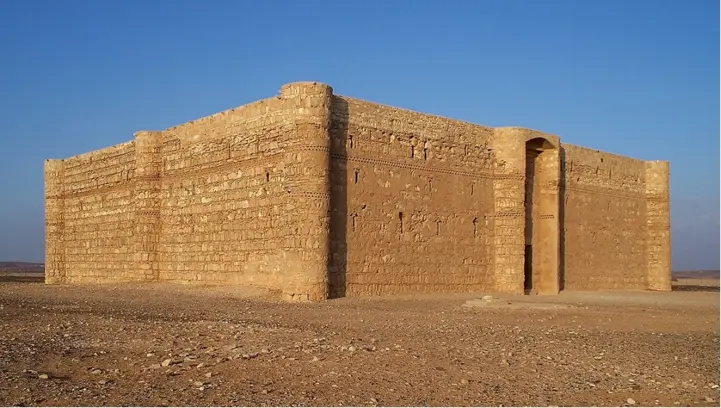
Qasr Kharana, located in the Jordanian desert, is one of the few Umayyad palaces that has survived the absurdity of time. It is believed that the palace was used as a rest palace or perhaps a caravanserai. Its unique architectural design and interior wall decorations attract visitors from all over the world.
Jabal Al-Lubidah
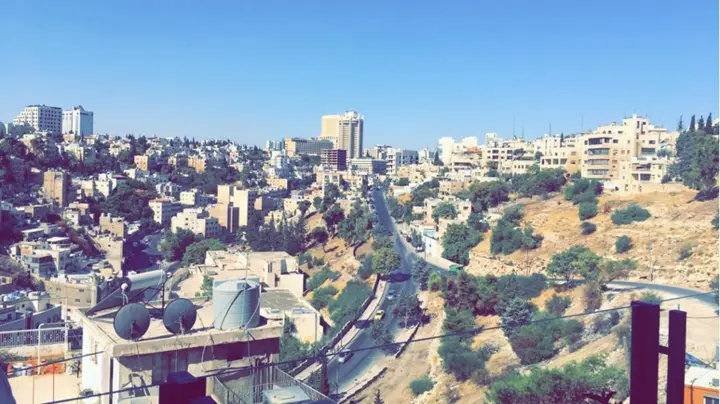
Jabal Al-Weibdeh, with its historic houses and narrow streets, is one of Amman's oldest and most charming neighborhoods. Featuring antique cafes and restaurants serving delicious Jordanian dishes, the mountain is an ideal place to wander around and enjoy the landscape and architecture.
Abu Al Darwish Mosque
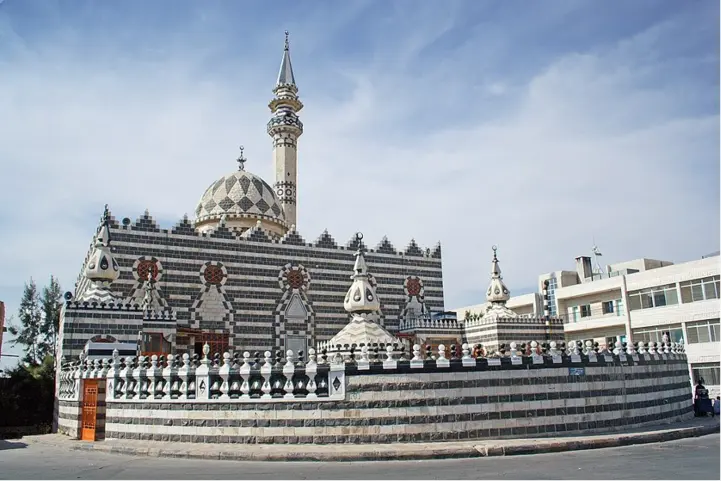
Abu Darwish Mosque, with its white domes and unique black minarets, is one of the most distinctive mosques in Amman. The mosque is located in the Ashrafieh area and is considered a symbol of religious and cultural coexistence in Jordan. The mosque is known for its beautiful architectural design and panoramic view of the city.
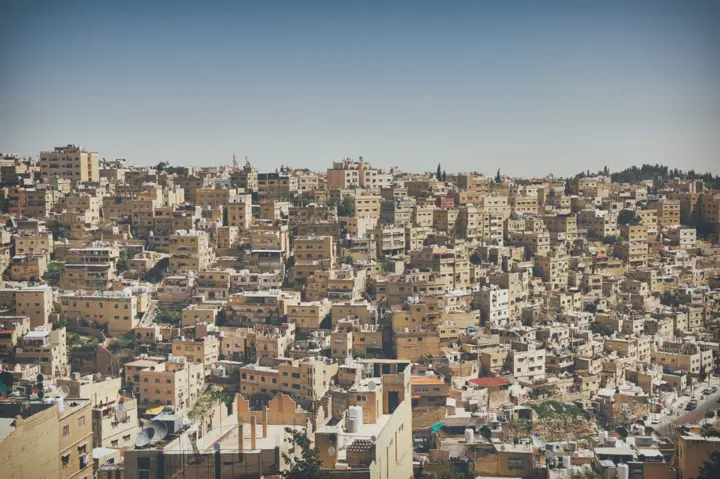
This was a tour of the most important tourist attractions in Amman, Jordan and the rich cultural and historical experience it offers its visitors, where originality is in harmony with modernity. Amman's sights are a testament to Jordan's rich history and diverse culture, offering the visitor the opportunity to explore the beauty of this unique city.








